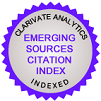The Sovereign According to Colombian Independence Constitutionalism: The Catholic People or the Catholic Nation?
DOI:
https://doi.org/10.17811/hc.v0i19.485Keywords:
Nation, people, sovereignty, constitutions of independence, New GranadaAbstract
This paper points out the differences and similarities between the concepts of sovereignty used in the Hispanic American world, with emphasis on the New Granadian case, between 1811 and 1815: Catholic people and Catholic nation. The most significant differences were: (i) considering the Catholics as the sovereign people allowed the expression of local and family interests that dominated the provincial constitutionalism of the First Republic and (ii) approaching the Catholics as the sovereign people was a way to oppose to the concept of a Catholic nation used by the Cortes and the Constitution of Cadiz in Spain, which was the warlike counterpart during the first years of the Revolution of Independence. Once the First Republic had been defeated, the rules of the new type of war and the lessons learnt from the political errors gave rise to the emergence among the revolutionaries of the concept of a (catholic) nation as the new sovereign, which allowed a project of collective identity among the “independentistas” that went beyond the local level. This project was absent from the provincial constitutionalism of the First Republic. Therefore, when the Revolution of Independence assumed the discourse of national sovereignty in both the political and military realms, the local and even family distances between the revolutionaries could be overcome, thus fostering a successful unifying project. So, sovereign nationalism was not a discourse accepted in early Independence, but one created by the pursuits of war and constitutional politics, once the provincial constitutions of the First Republic were discarded.
Enviado el (Submission Date): 03/04/2017
Aceptado el (Acceptance Date): 23/06/2017
Downloads
Downloads
Published
Issue
Section
License
Authors who publish with this journal agree to the following terms:- Authors retain copyright and grant the journal right of first publication with the work simultaneously licensed under a Creative Commons Attribution License that allows others to share the work with an acknowledgement of the work's authorship and initial publication in this journal.
- Authors are able to enter into separate, additional contractual arrangements for the non-exclusive distribution of the journal's published version of the work (e.g., post it to an institutional repository or publish it in a book), with an acknowledgement of its initial publication in this journal.
- Authors are permitted and encouraged to post their work online (e.g., in institutional repositories or on their website) prior to and during the submission process, as it can lead to productive exchanges, as well as earlier and greater citation of published work (See The Effect of Open Access).
- Journal can use the published works for future publications.
- Authors must inform the journal of later publications of their text.








